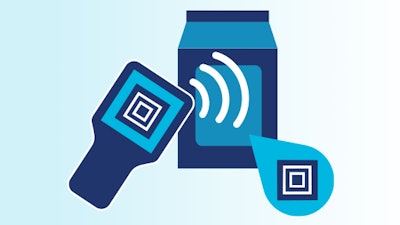
GS1 US has published a new guideline to assist U.S. foodservice companies in using radio frequency identification (RFID) to improve supply chain visibility, efficiency, and consumer safety.
The “GS1 US RFID Foodservice Implementation Guideline” provides case/carton requirements for foodservice suppliers to minimize disparate supplier tagging requirements. For food products and consumer-facing food packaging, the guideline specifies tag encoding, tag marking, and tag placement.
“Automation enabled by RFID not only offers inventory visibility, but also supports critical supply chain processes including withdrawals, product safety holds, return logistics, and more,” says Angela Fernandez, vice president of community engagement, GS1 US. “In these times of short supply of goods, knowing what is on hand and safe to use is a significant positive outcome for businesses and consumers alike.”
 | PACK EXPO Southeast Debuts Spring 2025 in Atlanta |
The new guideline was developed by GS1 US foodservice workgroups to identify how suppliers should encode GS1 Standards in RAIN RFID tags and to provide a roadmap for adoption. The new document is designed to guide companies with implementing open, interoperable GS1 Standards to enable more efficient tracking, management, and traceability of products throughout the supply chain.
Distributors can learn how to integrate RFID technology within their systems to ensure compliance with new standards, and end users can benefit from understanding the available data and the access this enhanced method of data capture provides.
GS1 US, a member of GS1 Global, is a not-for-profit information standards organization that facilitates industry collaboration to help improve supply chain visibility and efficiency through the use of GS1 Standards, the most widely used supply chain standards system in the world.






















